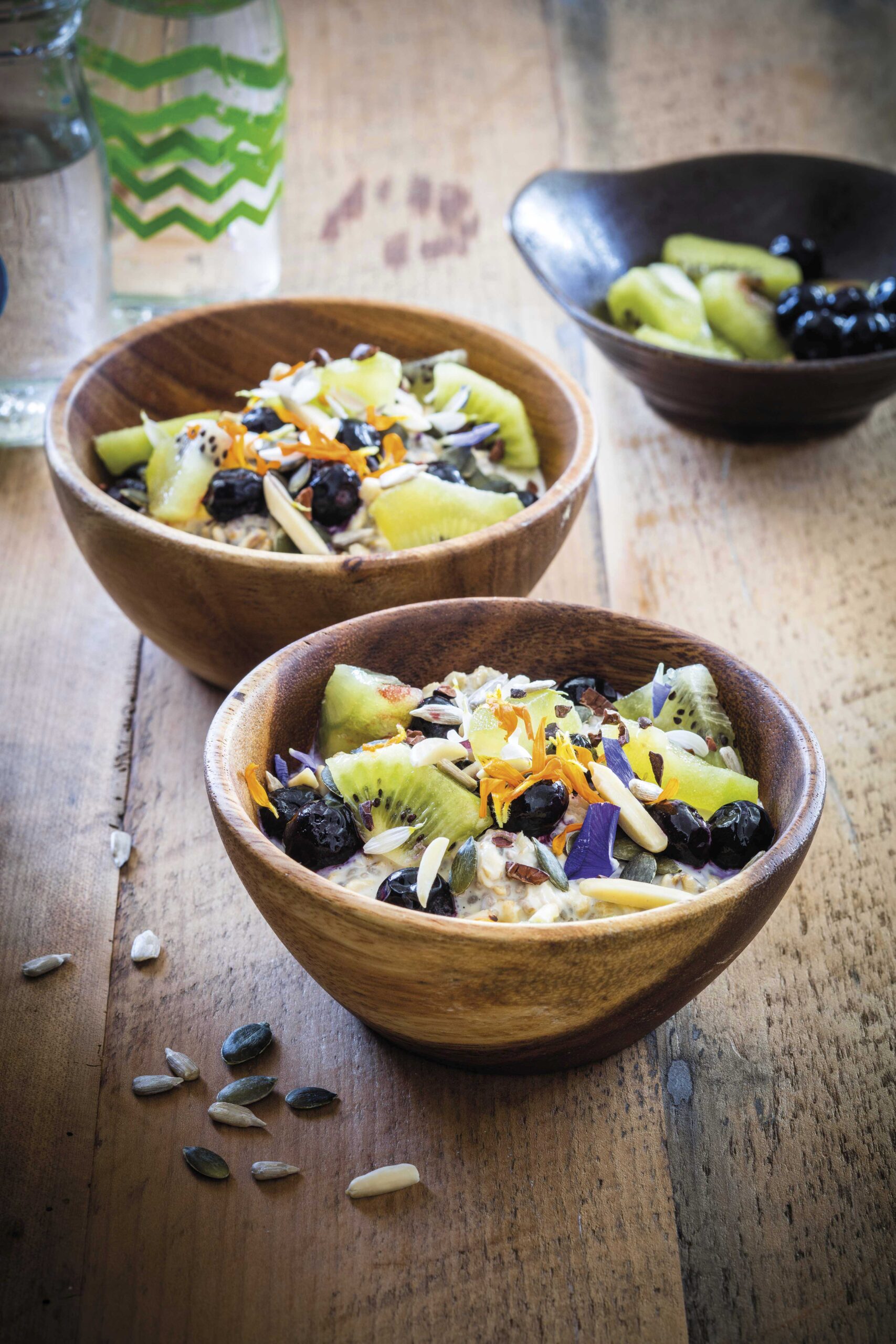We can’t see them, but they are our body’s physical framework and should they crumble, so will we. So what can we do to keep our bones healthy?
Words Skye Wishart. Illustration Angela Keoghan
If our bones were to fracture at every knock, a simple stroll down the path to the local shop might seem ridiculously risky. That’s the case for osteoporosis sufferers, some 56 percent of New Zealand women and 29 percent of our men over 60. Scarily, nearly 20 percent of people with hip fractures die from complications within a year. It’s enough to make us reach for the milk by the litre. But what do bone experts say we should do to keep ourselves out of harm’s way? How much calcium do we need? What else can we do for our age?
“The two primary factors that determine your bone density from 20s through 40s for women are firstly body weight, and secondly whether you’re making normal amounts of sex hormones,” says Professor Ian Reid of the University of Auckland and Fellow of the Royal Society of New Zealand. “Very thin women stop having periods and stop making normal amounts of sex hormones, a critical factor in building bone density.” Although, sex hormones can be affected by other factors too, such as hysterectomy and menopause.
A lot of people think that beyond your teenage years, bones are static. But bones are always changing and being remodelled, built up by bone-forming cells and broken down by bone-resorbing cells. When more bone is resorbed than built, the bones weaken, and we get osteoporosis.
Oestrogen dampens the activity of these bone-resorbing cells. That’s why we have bone loss after menopause: when oestrogen drops, the rates of bone resorption double – and the rates of bone formation just can’t keep pace. (Reid says it’s less clear-cut with male sex hormones: testosterone drops more gradually with age than oestrogen, and it may promote bone-forming cells more than oestrogen does, but males still experience bone loss in the end.)
“Our bones are an intricately made protein framework, which is laid down by bone-forming cells and taken away by bone-resorbing cells. And sure, there is calcium and phosphate laid down within that, but bone is primarily a protein-based tissue. This tissue is affected by bone-cell activity, which is in turn governed by hormonal factors.”
So, calcium doesn’t actually matter?
Yes, it still does. Calcium provides the strength and hardness to the essential soft-protein tissue. “If you look across populations in the West, there’s no difference between people who consume 500mg of calcium a day, and people who consume 1500mg, but having a moderate calcium intake is a sensible thing to do and we recommend 500–1000mg a day.” That’s up to three cups of milk a day, or one-and-a-half cups of yoghurt.
Weight-bearing exercise
Weight-bearing exercise – namely, running, dancing, squash, etc – is also important for bone health. Our bones respond to exercise in the same way as muscles; they’ll get stronger. Vitamin D is another critical ingredient, as it aids calcium absorption. It’s made in the skin mostly through sun exposure, and the average Kiwi gets enough this way. Risk factors include having very dark skin, living far down south, wearing a veil, or being confined indoors. In those cases
a supplement may be necessary.
There are times in our lives that are more crucial for bone health than others, and pregnancy is one of them. During pregnancy, says Reid, our bodies are actually much more efficient at absorbing calcium from the diet than they are normally, but increasing our calcium intake all the same is sensible. Breastfeeding will tend to deplete our skeleton of calcium, but our body will then rapidly replace it when the baby is weaned. The depletion could be caused by milk production, or from not having normal periods and associated sex hormones. Luckily, Reid says there is no evidence that prolonged breastfeeders have damaged skeletons by the time they’re in their 50s – it all seems to balance out naturally.
Bone health and menopause
Another crucial life phase for bone health is menopause. Body weight is very important here: if a woman is average height and weighs less than 60 kilograms, then the risk of fractures goes up significantly. The other critical thing is to remain physically active. This is good for heart and general health, but also minimises falls, and increases the ability to protect yourself with your hands if a fall happens.
There’s not much we can do to increase bone density after menopause, but preserving our bone health is essential. It’s very important to maintain weight-bearing activity, because while three 30-minute sessions a week might only increase bone density by 1 percent, if we’re not active, loss of bone density will accelerate.
“For example, when you break a bone and you’re in a plaster cast, not putting weight on it for many weeks, then you could lose up to 20 or 30 percent of bone density. So increasing activity makes a small difference, but dropping activity makes a profound difference,” says Reid.
Around 60 years of age, it’s important to get a bone-density map to predict the likelihood of problems in the future – and whether we need to act immediately or just keep an eye on things. Common treatments to halt osteoporosis once it’s started involve a class of drugs called the bisphosphonates. They are simple phosphate salts, taken orally or injected, which bind to bone and provide a protective coating across the surface that decreases the ability of the bone-resorbing cells to chew away at our bones. Bisphosphonates can bring bone back to pre-menopausal levels, basically resetting the balance between formation and resorption.





